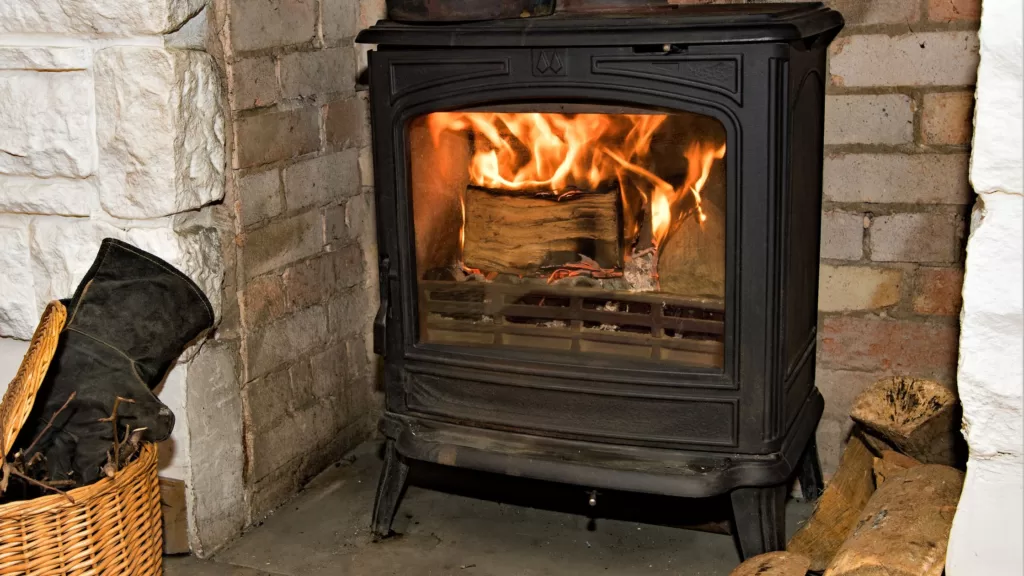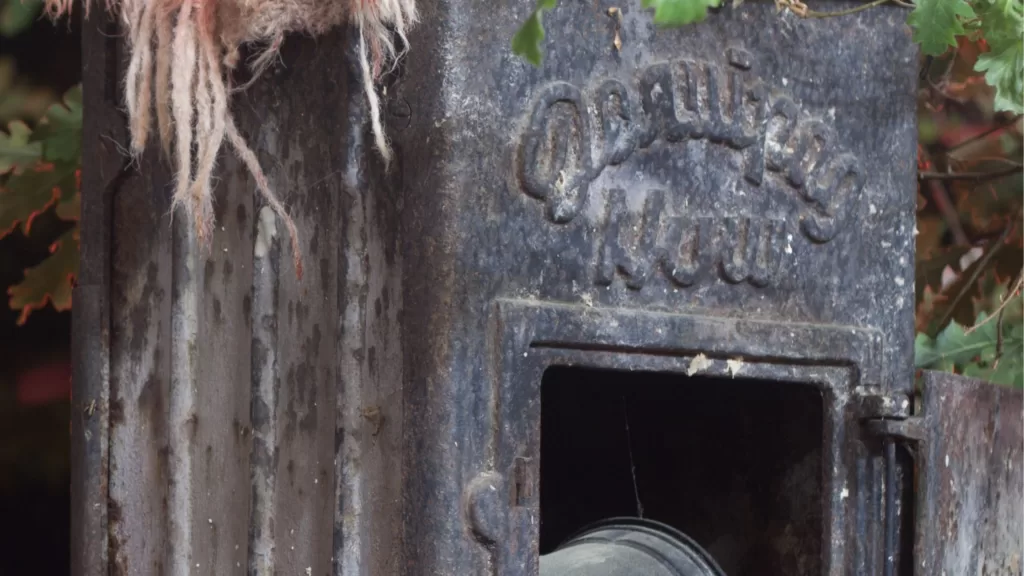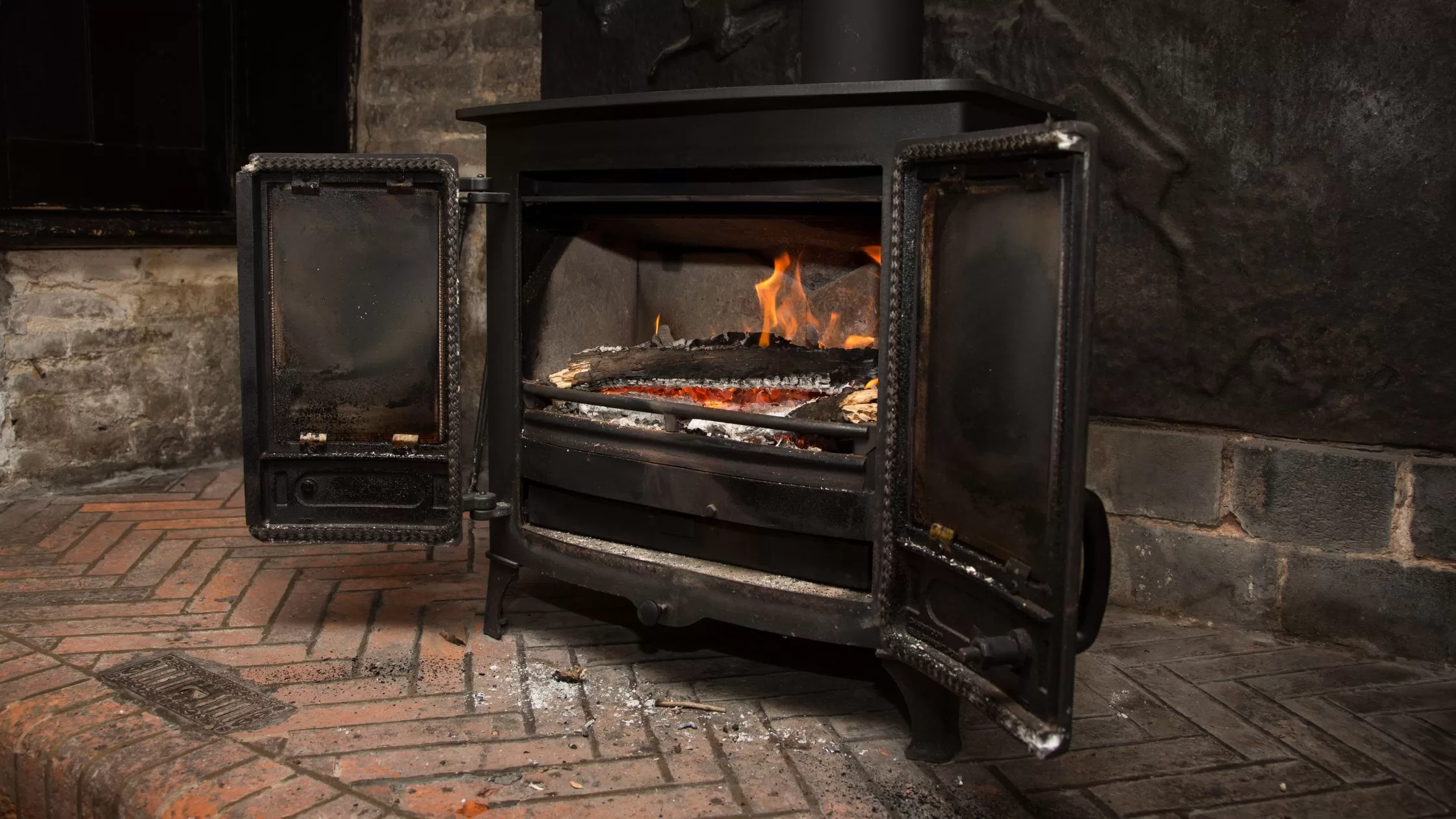In the world of vintage and antique collecting, few items exude the timeless charm and historical significance of antique wood stoves. These iconic pieces of craftsmanship not only provide a glimpse into a bygone era but also serve as functional and aesthetic additions to homes and collections. However, for collectors and enthusiasts, one essential skill reigns supreme: antique wood stove identification. Knowing how to discern the age, origin, and authenticity of these stoves is the key to unlocking their value and appreciating their unique stories. In this comprehensive guide, we will embark on a journey into the art of antique wood stove identification, exploring the vital characteristics, historical context, and invaluable tips that will empower you to distinguish genuine treasures from replicas and replicas. So, let’s stoke the fires of curiosity and delve into the world of antique wood stove identification.
The History of Antique Wood Stoves

Antique wood stoves are not just functional pieces; they are a window into history itself. To truly appreciate the art of antique wood stove identification, it’s essential to journey back in time and explore their rich historical tapestry. In this section, we’ll provide a comprehensive historical overview of antique wood stoves, shedding light on their significance in past households and industries while also tracing the remarkable evolution of their design and materials over time.
A Journey Through Time
Antique wood stoves have a fascinating history that spans centuries. They were once the heart and hearth of homes, providing not only warmth but also a focal point for cooking and gathering. These stoves were integral to daily life, and their designs and features evolved in response to technological advancements and societal needs.
Household Significance
In past households, wood stoves were more than mere appliances; they were lifelines. Families relied on these stoves to prepare meals, heat their homes, and even dry their clothes. The comforting glow of a wood stove offered solace during long, cold winters, fostering a sense of togetherness around its radiant warmth. Understanding the role of wood stoves in households of yesteryears allows us to appreciate their enduring charm.
Industrial Impact
Beyond homes, antique wood stoves played a pivotal role in industries. They powered factories, heated blacksmith forges, and fueled locomotives. These stoves were workhorses, driving the wheels of progress during the Industrial Revolution. Examining their industrial significance provides insights into the ways in which they shaped the world around them.
Evolution of Design and Materials
The design and materials of antique wood stoves underwent significant transformations over the years. Early stoves were utilitarian, made of cast iron, and primarily focused on functionality. As time passed, intricate details and decorative embellishments became commonplace, turning wood stoves into works of art. The transition from utilitarian to ornate designs reflects not only changes in aesthetics but also shifts in societal values.
Why Identify Antique Wood Stoves?
Intriguing as antique wood stoves may be, one might wonder, “Why is it crucial to identify these captivating relics?” In this section, we’ll unveil the reasons that underscore the importance of antique wood stove identification. We’ll explore the intrinsic value these stoves hold for collectors and enthusiasts, shedding light on the profound historical and aesthetic allure they bring to the table.

At first glance, an antique wood stove may appear as a captivating piece of history, but its true significance lies beneath the surface. Identifying these stoves isn’t merely an academic exercise; it’s a doorway to a world of understanding, appreciation, and preservation.
The Collector’s Quest
For collectors, the allure of antique wood stoves runs deep. Each stove is a unique piece of craftsmanship, often representing a specific era, style, or manufacturer. Identifying these stoves allows collectors to curate their collections meticulously, ensuring each piece is genuine and possesses historical significance.
A Step Back in Time
The historical value of antique wood stoves cannot be overstated. These stoves provide invaluable insights into the lifestyles, technologies, and design aesthetics of the past. By identifying a wood stove’s age, origin, and unique features, we can step back in time and immerse ourselves in the daily lives of those who used these stoves for warmth, cooking, and comfort.
Aesthetic Appeal Beyond Measure
Beyond their historical significance, antique wood stoves are cherished for their aesthetic charm. Identifying the intricate details, materials, and design elements of these stoves enhances our appreciation for the artistry that went into creating them. Whether it’s the ornate embellishments of a Victorian-era stove or the streamlined simplicity of an Arts and Crafts design, each wood stove tells a story through its aesthetics.
As we journey further into the realm of antique wood stove identification, we’ll uncover the critical characteristics that distinguish one stove from another, helping collectors and enthusiasts unlock the hidden treasures of the past.
Key Characteristics for Identification
In the realm of antique wood stove identification, a keen eye for key characteristics is paramount. In this section, we unveil the critical features to look for when identifying these timeless treasures. We discuss the significance of materials, design elements, and manufacturing techniques, providing a comprehensive guide to recognizing authentic antique wood stoves. To enhance your understanding, we’ve included images and illustrations to vividly depict these distinguishing characteristics.
When you’re on the journey of identifying antique wood stoves, it’s akin to being a detective. You’re not just examining a piece; you’re uncovering a piece of history. Here’s what you need to know:
Materials Matter
Most antique wood stoves were constructed from cast iron. This material is a hallmark of durability and heat retention. It’s not just about the weight; it’s about the feel and texture. Run your hand over the surface; feel the solidness. When you tap it gently, you’ll hear a distinct sound – a resonance that only cast iron can produce. It’s a reassuring sign that you’re in the presence of an authentic antique.
Design Elements
The design of wood stoves evolved over time, reflecting the trends and technologies of different eras. For example, during the Victorian era, stoves were adorned with intricate floral patterns and embellishments. It’s like owning a piece of art that also serves a functional purpose. In contrast, the Arts and Crafts movement favored simplicity and functionality. Identifying these design elements can help you narrow down the stove’s age and style.
Manufacturing Techniques
This is where it gets really interesting. Examining the manufacturing techniques used in a wood stove can reveal its age. For instance, early stoves were sand-cast, leaving a slightly rough surface. Later, as precision machining techniques developed, stoves became smoother and more refined. By feeling the texture and inspecting seams and joints, you can uncover clues about the stove’s production methods and era.
Discovering the Manufacturer’s Imprint
The marks and labels left by manufacturers are like fingerprints on antique wood stoves. In this section, we provide insights into well-known antique wood stove manufacturers and explain how identifying their marks and labels can aid in the identification process. Let’s delve into the world of famous brands and their historical significance, unraveling the stories etched into these stoves.

Think of antique wood stoves as historical artifacts with their own unique stories. The manufacturer’s imprint is like the signature at the bottom of a painting, and it can tell you a lot about the stove’s origins.
Brand Recognition
Imagine finding a wood stove with a stamped logo that reads “Griswold.” This instantly connects you to a renowned manufacturer known for quality and craftsmanship. Each brand has its own distinct style and innovations. Griswold, for example, was famous for its intricate designs and attention to detail. When you identify the brand, you’re not just identifying a stove; you’re recognizing a piece of history.
Manufacturer Marks
Some manufacturers left distinct marks or labels on their stoves. It could be a metal tag with the brand name, a unique handle design, or even a specific placement of air vents. These marks are like breadcrumbs left by the stove’s creators, guiding you toward understanding its origins and significance.
Historical Significance
Knowing the manufacturer’s history is like uncovering the backstory of a character in a novel. For instance, Atlanta Stove Works played a crucial role in supplying stoves to the American South during the late 19th century. Understanding their historical significance adds depth to your appreciation of a stove bearing their mark.
As you embark on the exciting journey of antique wood stove identification, remember that it’s not just about uncovering a piece; it’s about connecting with history, craftsmanship, and the stories of those who used these stoves in bygone eras. It’s a captivating adventure where each discovery unveils a new chapter in the narrative of these remarkable relics.
Determining Age and Era
As you delve into the world of antique wood stoves, one of the most exciting quests is determining their age and era. It’s like unlocking a time capsule, and it’s a journey I’ve personally found both fascinating and rewarding. Let’s explore how to unveil the age and era of these marvelous stoves.
Estimating the Age
To begin, examine the stove’s construction materials and manufacturing techniques. Early stoves were sand-cast, leaving behind unique surface textures. As time progressed, precision machining created smoother surfaces. Touch the stove, run your fingers along its contours, and observe any telltale signs of aging. The patina on the metal, wear patterns, and even accumulated soot can provide valuable clues.
Changes in Design and Technology
Wood stove design and technology evolved in response to societal changes and innovations. Take, for instance, the transition from ornate Victorian stoves to the streamlined designs of the Arts and Crafts movement. The presence or absence of specific features, like damper controls, can further pinpoint the era. By studying these design shifts and technological advancements, you can establish a rough timeline for the stove’s origin.
Dating Wood Stoves
Specific features and historical context play a pivotal role in dating wood stoves. Look for features like decorative motifs or manufacturer’s labels. These can be cross-referenced with historical records to narrow down the stove’s age. Additionally, consider the stove’s location. Stoves used in rural areas may retain a vintage look longer than those in urban settings due to slower adoption of new designs.
Resources for Antique Wood Stove Identification
As you embark on your journey of antique wood stove identification, having the right resources at your fingertips can make all the difference. Allow me to share some valuable resources and references that have been my guiding stars in this captivating endeavor.
Websites
The digital age has brought forth a wealth of online resources. Websites dedicated to antique wood stoves, such as AntiqueStoveHeaven.com and Hearth.com, offer a treasure trove of information, including forums where enthusiasts exchange insights and experiences.
Books
Nothing beats the depth of knowledge found in well-researched books. Titles like “Antique Stoves: A Guide for Buyers, Collectors, and Restorers” by Michael Bruner and “The Woodburner’s Companion” by Dirk Thomas provide in-depth insights into wood stove identification and restoration.
Collector Communities
Engaging with collector communities is akin to joining a passionate family. Online forums and social media groups, like those on Facebook and Reddit, allow you to connect with fellow enthusiasts. Here, you can seek advice, share your finds, and learn from seasoned experts.
Antique Appraisers and Experts
Don’t hesitate to reach out to antique appraisers or experts in the field. Their professional assessments can be invaluable, especially when dealing with rare or unique stoves.
By harnessing these resources and immersing yourself in the world of antique wood stoves, you’re embarking on a journey filled with discoveries, shared experiences, and a profound connection to the craftsmanship and history of these remarkable pieces.
Challenges and Common Pitfalls
Antique wood stove identification is an exhilarating journey, but it comes with its own set of challenges and pitfalls. Having encountered these hurdles myself, I’m eager to guide you through potential roadblocks and share tips on avoiding common mistakes.
Challenges Aplenty
One of the primary challenges is the age and wear of the stove itself. Over time, stoves can undergo repairs, alterations, or modifications, making their original features harder to discern. A pristine stove might be easier to identify, but what about one that’s seen years of use and restoration attempts? These seasoned stoves often carry stories within their scars.
Avoiding Common Pitfalls
To avoid misidentifications, take your time. Rushing can lead to overlooking critical details. Pay close attention to any unusual modifications or non-original parts. If you encounter a stove with a mix of features from different eras, be cautious. It might be a hybrid, blending parts from various stoves during repairs or restorations.
Replicas and Reproductions
In the realm of antique wood stoves, replicas and reproductions lurk as potential traps for the unwary collector. These modern creations aim to mimic the charm of antique stoves. They can be remarkably convincing, especially to newcomers. To avoid falling into this pitfall, research thoroughly, and learn about the telltale signs of modern reproductions.
Preserving and Restoring Antique Wood Stoves
Preservation and restoration are crucial facets of antique wood stove ownership. These stoves are not just relics; they’re windows into the past, and it’s our responsibility to ensure their stories continue to be told.
Importance of Preservation
Antique wood stoves are time capsules of history. Proper preservation ensures that these invaluable artifacts survive for generations to come. It’s like being a custodian of a museum piece, entrusted with the task of conserving its historical integrity.
Cleaning and Maintenance
The first step in preservation is regular cleaning and maintenance. Use non-abrasive materials and mild cleaners to gently remove dirt and soot. Be mindful of the stove’s delicate parts, such as nickel-plated accents. Regularly inspect for signs of rust or corrosion and address them promptly to prevent further damage.
Restoration Techniques
When it comes to restoration, tread carefully. The goal is not to erase history but to breathe new life into a piece while preserving its character. Seek professional restoration services if you’re uncertain. They can restore damaged parts, rejuvenate the finish, and ensure the stove remains true to its era.
Historical Integrity
Above all, respect the historical integrity of your antique wood stove. Avoid making irreversible alterations or modifications. Retain the original features and patina that tell the stove’s unique story. Think of it as a collaboration between the past and the present, where preservation honors history’s craftsmanship.
By navigating the challenges of identification and embracing the principles of preservation and restoration, you’re not just caring for antique wood stoves; you’re becoming a steward of history. These stoves have endured the test of time, and with your thoughtful care, they’ll continue to warm hearts and tell tales of bygone eras.
1800’s Antique Wood Stove Identification: A Journey Through Time
Identifying wood stoves dating back to the 1800s is a captivating journey through time, filled with unique details and historical insights. These antique treasures from the 19th century often exhibit distinct characteristics that set them apart. One crucial aspect to examine is the materials and construction. Stoves from this era were typically crafted from cast iron, known for its durability. A touch of the surface can reveal the slightly uneven texture that signifies authenticity. Dive into the stove’s design, where you might encounter ornate patterns, floral motifs, and intricate details that mirror the Victorian era’s design aesthetics. Exploring manufacturing techniques is akin to deciphering the craftsman’s artistry, with subtle imperfections hinting at hand-crafted authenticity. Yet, don’t overlook historical documentation; antique catalogs, advertisements, or patents from the 1800s can provide valuable clues. Additionally, consider local history and provenance, as stoves used in specific regions might hold unique features. By immersing oneself in these historical details and leveraging available resources, the world of 1800’s antique wood stove identification becomes a fascinating adventure of discovery and appreciation for craftsmanship of the past. To know more about 1800s wood stoves check this video.
Conclusion
In our journey through the world of antique wood stove identification, we’ve unraveled the captivating stories hidden within these remarkable relics. Antique wood stoves are not just objects; they are portals to history, craftsmanship, and a sense of nostalgia.
We’ve explored their historical significance, from being the heart of households to driving industrial progress. We’ve delved into the reasons why identifying antique wood stoves matters, emphasizing their value to collectors, their historical importance, and their aesthetic charm.
Understanding key characteristics for Antique wood stove identification, recognizing manufacturer marks, and determining the age and era of these stoves have been pivotal aspects of our journey. These skills empower us to distinguish genuine treasures from replicas and reproductions.
We’ve also shared resources for further exploration, from websites and books to collector communities and experts. Engaging with these resources enriches our knowledge and connects us with a community of enthusiasts.
Lastly, we’ve discussed the challenges and common pitfalls in Antique wood stove identification and the importance of preservation and restoration. By navigating these challenges with care, we become stewards of history, ensuring these stoves continue to warm hearts and tell tales of bygone eras.
As we conclude this journey, we encourage you to explore the world of antique wood stoves, share your discoveries with fellow enthusiasts, and continue stoking the fires of curiosity.
To enhance your antique identification skills even further with our comprehensive guide on How to Identify an Antique Drop-Leaf Table. Uncover the hidden treasures of the past and add depth to your antique knowledge journey. And don’t forget to visit our antiques and collectibles category to delve even deeper into the fascinating realm of historical treasures.

Leave a Reply